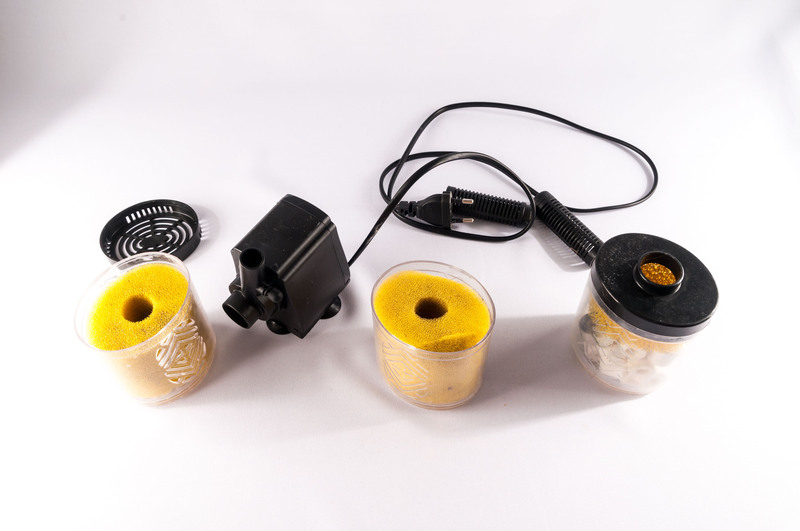Insider Tips on Keeping Your Sofa Fresh in Storage Conditions
Storing your sofa, whether short-term during a move or long-term for extra space, can feel daunting. Ensuring it comes out as fresh and beautiful as you left it requires a strategic approach. In this comprehensive guide, we'll reveal insider tips on keeping your sofa fresh in storage conditions, covering everything from preparation and protecting materials to regular maintenance and optimal storage environment. Let's dive in and make sure your beloved sofa remains as good as new!
Why Proper Sofa Storage Matters
Before discussing the best ways to store your sofa, it's vital to understand the risks involved when storing furniture under improper conditions. Your sofa is exposed to:
- Moisture and Humidity: These can cause mold, mildew, and fabric deterioration.
- Pests: Unwanted visitors like bugs and rodents may turn your sofa into their home.
- Dust and Odors: Prolonged exposure to dust or musty atmospheres leads to lasting odors and allergens.
- Physical Damage: Inappropriate stacking or moving might cause scratches, tears, or frame damage.
By taking simple yet effective measures, you can keep your sofa in perfect condition, ready to be used at any time!

Preparing Your Sofa for Storage
The secret to keeping your sofa fresh in storage starts with proper preparation. Follow these expert-approved steps before moving day:
1. Clean Thoroughly
The first, and arguably most essential step, is a deep clean. Dust, crumbs, and stains can worsen over time and create inviting environments for pests or bacteria.
- For Fabric Sofas: Vacuum thoroughly, getting into crevices and underneath cushions. Use an upholstery cleaner suitable for your fabric type. Allow your sofa to dry completely before storing.
- For Leather Sofas: Wipe down with a soft, damp cloth and use a leather conditioner to avoid drying or cracking. Ensure it's fully dry before covering or wrapping.
- Don't forget : Check for and remove any hidden coins, toys, or debris between cushions!
2. Disassemble If Possible
Storing in smaller parts helps prevent unnecessary stress on joints and reduces the risk of damage. Remove legs, cushions, or detachable arms. Keep all hardware in a labeled bag; tape it to the sofa frame for easy reassembly.
3. Protect Delicate Elements
- Wrap wood or metal parts in bubble wrap to prevent scratches or dents.
- Pillows and cushions should be placed in breathable storage bags.
4. Use the Right Cleaning Products
Always follow manufacturer recommendations for cleaning products. Harsh chemicals can damage fibers or strip natural oils from leather. When in doubt, spot test on a hidden area.
Choosing the Best Storage Space for Your Sofa
Location is everything. Your choice of storage can make a dramatic difference in how fresh and intact your sofa emerges.
1. Climate-Controlled Storage Units
Climate control is the gold standard for protecting upholstered or leather furniture. These units maintain a steady temperature and humidity, preventing mold, mildew, and material warping.
- Temperature Range: 55?F to 80?F is ideal for most sofa materials.
- Humidity: Should remain between 30%-50% to avoid dampness and mold growth.
2. Clean, Dry, and Secure Spaces
Whether you rent a professional storage unit or use a garage/basement, inspect thoroughly beforehand:
- Look for signs of leaks, pests, or excessive dust.
- Avoid spaces that are musty, damp, or poorly ventilated.
- Choose elevated areas that aren't prone to flooding or condensation.
3. Avoid Direct Sunlight & Extreme Temperatures
Exposure to direct sunlight can cause fading or cracking, especially for leather. High heat or freezing conditions are equally detrimental to all sofa types.
Packing and Positioning Your Sofa in Storage
1. Elevate the Sofa Off the Ground
One professional secret to keeping sofas in fresh condition during storage is to avoid direct floor contact. Even in climate-controlled storage, unforeseen leaks or condensation may occur.
- Use wooden pallets or plastic risers under the sofa to boost air circulation and protect from possible dampness.
- Keep at least 4 inches of space between the sofa and the wall for airflow.
2. Cover--But Don't Suffocate
The right cover creates a barrier against dust and pests but also allows the sofa to breathe.
- Breathable furniture covers or blankets are ideal. Avoid plastic wrap directly on upholstery--this traps moisture and can lead to mold.
- If using plastic coverings, ensure there are ventilation holes to prevent condensation buildup.
- Cover all exposed legs and arms, especially wooden or metal parts.
3. Mind Your Stacking Strategy
Don't pile heavy boxes or furniture on top of your sofa. Pressure from above can crush cushions, warp frames, or even lead to permanent indents.
- Upright positioning is the safest for long sofas.
- Store detachable cushions separately, ensuring they lay flat for even weight distribution.
Protecting Against Odor, Mold, and Pests
Maintaining freshness while in storage is about more than just cleanliness. Combatting smells, moisture, and pests is essential for keeping your sofa fresh in storage environments.
1. Stop Odors and Absorb Moisture
- Place baking soda packs or activated charcoal nearby to neutralize musty smells and absorb excess moisture.
- DIY dryer sheets can be tucked under dust covers for a pleasant scent--just avoid direct contact with the fabric.
2. Ward Off Pests
- Use natural pest repellent bags (like cedar chips or lavender sachets) instead of chemical solutions, which can stain or attract even more pests.
- Seal the unit or room around doors and windows to limit rodent and insect access.
- Inspect regularly for droppings, nests, or traces of bugs.
3. Control Mold and Mildew
Mold and mildew prevention is crucial, especially for damp climates. Consider:
- Running a dehumidifier for basement or garage storage spaces.
- Silica gel packs for added moisture absorption.
- Proactive cleaning and inspection every few months.
Regular Check-Ups: Don't Forget Your Sofa
Long-term storage doesn't mean forgetting about your sofa. Periodic maintenance is vital for keeping it in optimal condition.
- Inspect monthly for signs of dampness, mold, or pests.
- Refold covers, rotate cushions if possible, and replace moisture absorbers as needed.
- Let the sofa air out by temporarily removing covers and opening windows if weather permits.
- Touch up cleaning with a handheld vacuum or cloth to remove settled dust.
What to Avoid When Storing Your Sofa
Many well-intentioned sofa owners make mistakes that can cost them in the long run. Avoid these storage pitfalls if you want to keep your sofa fresh:
- Plastic wrap against fabric: This traps moisture, paving the way for mold/mildew.
- Storing in direct sunlight: Fading and cracking often result, especially for leather.
- Over-stuffing the storage space: Crowding promotes uneven pressure, sagging, and poor air-flow.
- Neglecting regular check-ins: Small issues like pests or moisture can escalate if unnoticed.
Special Sofa Materials: Storage-Specific Advice
Leather Sofas
- Never store damp leather--always allow it to fully dry after cleaning.
- Use leather conditioner before storing to prevent cracks.
- Keep away from heat sources, as sudden temperature shifts damage leather surfaces.
Velvet or Suede Sofas
- Brush fabric gently before storing to avoid matting.
- Use only breathable coverings--suede and velvet need air flow to prevent odor build-up.
Wood-Framed or Antique Sofas
- Apply wood oil or polish to prevent drying out.
- Wrap ornate parts in soft cloth to prevent scratching or denting.
How to Freshen Up a Sofa after Storage
Once you're ready to bring your sofa out of storage, a quick refresh is all it'll need!
- A thorough vacuuming to remove dust or particles.
- Spot cleaning any marks using materials appropriate for your sofa type.
- Allow the sofa to air out in a ventilated room before use.
- Re-fluff or rotate cushions to restore shape.
- Reapply fabric spray or leather conditioner for added protection.

Frequently Asked Questions About Sofa Storage
Can I store my sofa in the garage?
It's possible, but not always ideal. Garages tend to have fluctuating temperatures and humidity. If you use your garage, elevate the sofa, use breathable covers, and monitor for moisture and pests regularly.
How do I prevent my couch from smelling musty after storage?
Prevention is key: Clean thoroughly, use deodorizers like baking soda or activated charcoal, and ensure the storage environment is dry and ventilated.
Is it safe to cover my sofa with plastic?
Only if necessary. Plastic wrappers can trap moisture and cause mold. Use breathable covers and, if needed, loosely drape plastic with ventilation holes.
How often should I check on my stored sofa?
Ideally, monthly. Even a quick inspection helps catch issues before they escalate.
Final Thoughts: The Ultimate Insider Secret
Keeping your sofa fresh in storage conditions is about preventive care, smart packing, and consistent monitoring. By cleaning thoroughly, using appropriate covers, controlling the environment, and performing regular inspections, you're safeguarding your furniture investment for years to come. Don't just store your sofa--store it smartly!
Trust these insider tips and your sofa will always greet you looking--and smelling--as fresh as the day you stored it. Happy storing!



